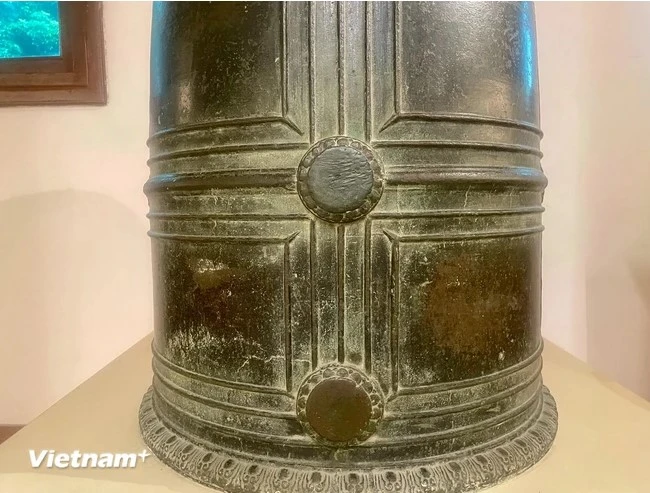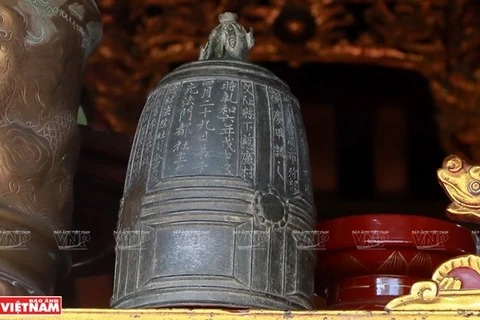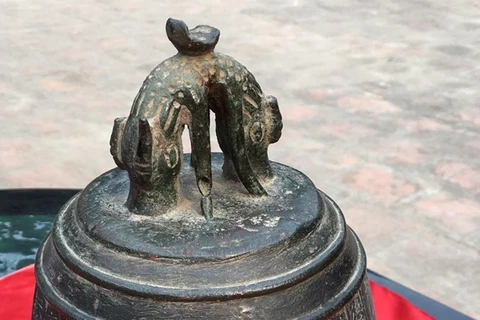
Hanoi (VNA) - This is an interesting story of Van Ban bell, which through the vicissitudes of most of its life has remained hidden on a seabed, but remains in very good condition despite enduring hundreds of years under the ocean.
One of the oldest of its kind in Vietnam, the bell was rediscovered in 1958, and is thought to have existed before the Thanh Mai bell (dated 798).
The ancient bell is from Do Son District, in the northern city of Hai Phong, having spent more time under the sea than suspended at its pagoda, and remains in pristine condition, somehow unoxidised.

The bronze bell measures 127cm in height and 80cm in diameter at the point of its largest circumference. There is no exact date of production on the body of the bell, but based on the artistic features, historians said it was likely made under the Tran dynasty (13th century). It is now considered one of the three oldest in Vietnam.
The handle on the top of the bell comes in the form of a pair of ornate dragons, with a lotus bulb on the crown. There are six areas on the bell, all in the shape of blossoming lotus bulbs, where it can be struck to ring out in all its glory, a beacon to the surrounding community.
On the body of the bell are inscribed lines of ancient Chinese characters, and the name of the donor. The lines also detail a number of mandarins under the Tran dynasty, and forbidden words to be avoided as regulated by the king at the time, namely Tran Anh Tong.

The Tuong Long tower and Van Ban pagoda, built in the Ly dynasty, were the first sites where the bell was ceremoniously placed. The structures are located next to each other, and were built under an order by King Ly Thanh Tong.
Local elderly citizens said that on the West side of the Thap mountain, there was a deep gorge running into the sea. When the pagoda collapsed, the bell rolled its way into the sea, only to be returned to Van Ban pagoda by locals a short time after that.
Centuries later, the pagoda was pulled down by strong winds of a typhoon, and the bell once again rolled its way to the sea, somewhat in defiance of its land-based wooden architectural home.

During the Le dynasty, the Van Ban pagoda was rebuilt on a smaller scale and at a lower location, right at the foot of the mountain. As the new pagoda was inaugurated, Buddhist followers lifted the bell from the sea and secured it back at its place of worship.
And, as its history had dictated, the bell once again made its way to the sea, as if knowingly manifesting a penchant for its long-time marine environment. There were rumors of how the bell again traveled seaward, including one that stated locals buried it to avoid the incoming raids of Ming invaders on the hunt for Vietnam’s cultural treasures.
On a summer morning in 1958, a local fisherman could not pull up his net as he caught a heavy object. It did not take locals long to discover that the heavy weight was indeed the huge bell, later confirmed by archeologists to be the ancient and well-travelled, if not obstinate, bell of the Van Ban pagoda./.






















